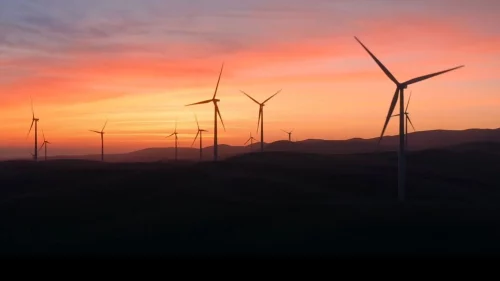
How Breakthrough Energy Accelerates Climate Innovation at Scale
Mike Boots, executive vice president of Breakthrough Energy, discusses the importance of supporting climate tech companies through every stage of the innovation cycle.

Energy is life. It powers industries, empowers communities, and builds societies. As the traditional boundaries of the industry continue to blur, BCG’s energy consultants light the way to the future of energy for our clients.
The world needs energy—affordable, reliable, and sustainable energy. But meeting the world’s energy requirements with net-zero climate impact is one of today’s most complex challenges.
Energy companies need to leverage the latest technologies, re-engineer processes, and rethink business models to drive change. BCG works with clients to build sustainable, competitive energy solutions to achieve a net-zero energy world for all.
BCG draws on a deep understanding of the energy industry, technologies, and stakeholders to help clients tackle today’s energy challenge and tap into new opportunities around the world. We work with business leaders, governments, and ecosystems to ensure that solutions are as practical as they are equitable and just.

Energy Transition. We help clients navigate the challenges and complexities of the global energy transformation to ensure worldwide energy equity and a just transition to low-carbon energy.

Renewables and Low-Carbon Solutions. We draw on deep commercial, technical, and regulatory expertise to help companies identify the right strategies, investments, and operating model around low-carbon and renewable energy.

Decarbonization. Decarbonization can deliver up to $26 trillion in economic gains by 2030. We take a sector- and company-specific approach to help clients identify and implement high-impact decarbonization methods.

Climate Change and Sustainability. We help businesses identify and harness climate innovation, embed sustainability into their business at scale, and link energy plans with climate commitments.

Resilience. From geopolitical challenges and supply chain bottlenecks to soaring inflation, rising interest rates, and decelerating growth, we consider how each disruption impacts the future of energy and the path to net zero.

Artificial Intelligence. We tap into our AI expertise to ensure that clients are applying the best analytics and solutions for the sharpest insights around energy access, emissions reduction, and operational excellence.

Traditional energy sector boundaries are blurring as companies throughout every industry reach different stages in their energy transformation. As the new energy future continues to emerge, leaders must turn away from old approaches, embrace new thinking, and reinvent business models to ensure the proper supply and demand of sustainable energy for both businesses and the world beyond.
BCG’s energy consultants help clients decarbonize and rapidly scale zero-carbon solutions and technologies by working shoulder-to-shoulder with them to solve the energy trilemma—ensuring affordable, reliable, and sustainable energy—no matter where they are in their energy transformation.
Tomorrow’s energy solutions take shape today as BCG orchestrates innovative models and partnerships that strive for what’s best for all of us.

Mike Boots, executive vice president of Breakthrough Energy, discusses the importance of supporting climate tech companies through every stage of the innovation cycle.

As the State Oil Company of Azerbaijan Republic (SOCAR) expands into green energy, SOCAR president Rovshan Najaf describes the company's transformative journey and commitment to enhancing sustainability.

BCG helped E.ON reshape its core business into a powerful tool capable of addressing the challenges facing the power and utilities industry, such as climate change and managing sustainable energy demand and supply.

Shell and BCG have worked together on many occasions to reimagine the future of energy. This time, they’ve sought to address an important challenge for the mining and construction industries: how to maximize the productivity of equipment.
In an interview with BCG, one of the few women CEOs in the energy industry talks about how she’s making sustainability a part of everything Pertamina does.
The Center for Energy Impact (CEI) shines light on the energy transition and what is required for the global transformation. CEI applies a holistic perspective to understanding and shaping bold responses to one of the most critical and complex challenges of our time.
LEARN MOREOur energy consulting team helps clients seize the opportunities in today’s energy transformation.